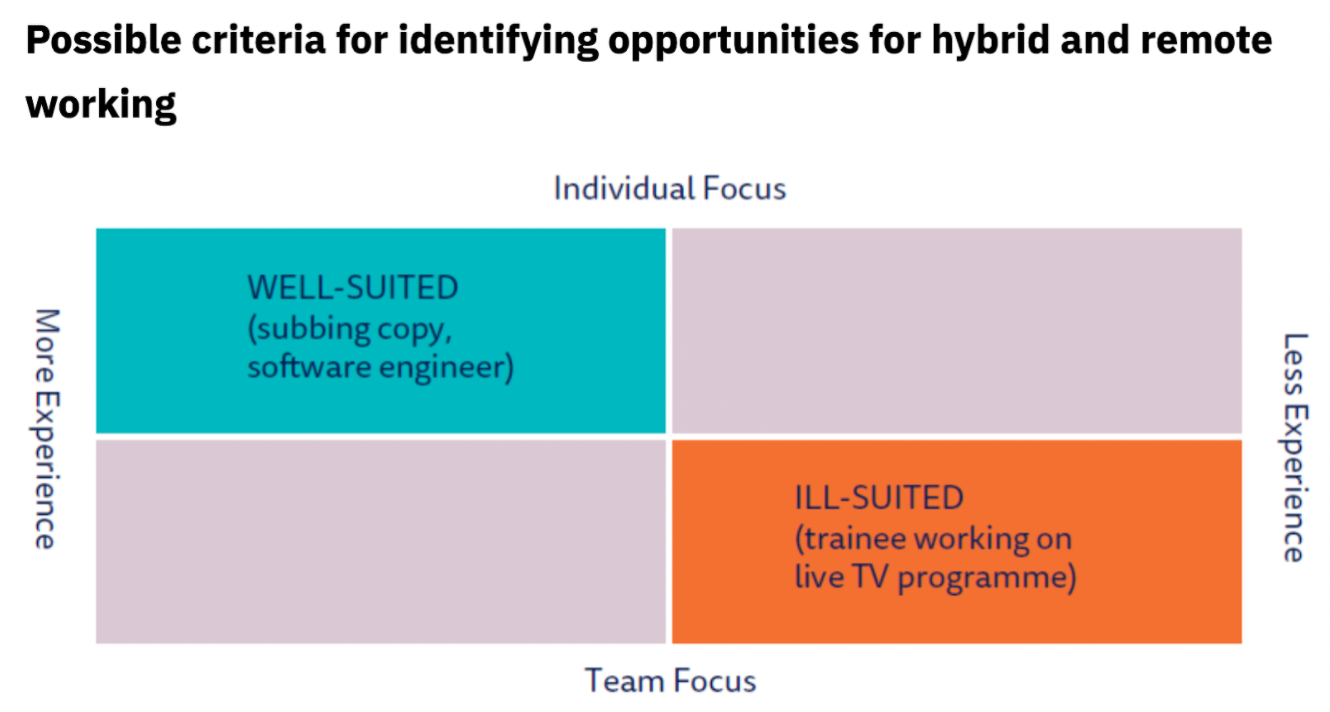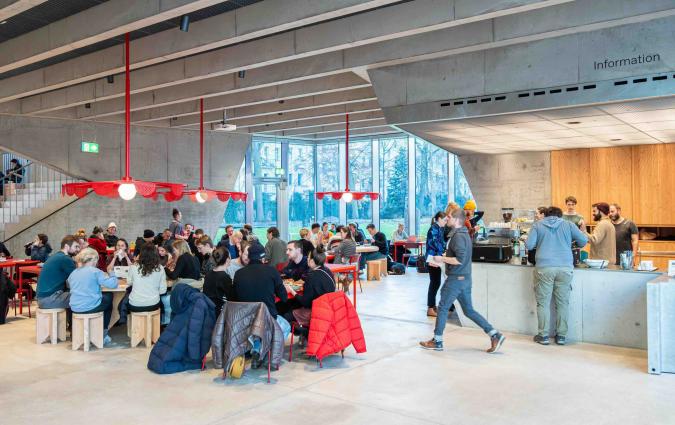We have a unique opportunity to reshape our newsrooms. Here’s what I’ve learned from the people leading change right now

Participants of one of our leadership programmes. | Credit: John Cairns
The evolution of the pandemic and its dire consequences on people’s health and lives still varies greatly across the world. In some places news organisations have started to reopen their offices to some or even to most of their workforce. In others they are still figuring out how to do so as soon as it’s safe.
As more newsrooms are mulling over these issues, I’ve gathered a few takeaways from the latest Changing Newsrooms report I wrote along with Nic Newman and Rasmus Nielsen together with some of the lessons I’ve learned in the last two years by talking to hundreds of newsroom managers and media leaders. The people we host in our leadership development programmes hail from all over the world. The pandemic and the initially forced move to run everything online has allowed us to engage with a more diverse group of leaders from countries such as India, South Africa and Mexico.
They work for different companies and have different backgrounds, and while some specific challenges on content, audience and business strategies might vary, they are all grappling with similar issues of talent, diversity and navigating the shift to flexible working.
I hope the following lessons are useful to anyone who’s thinking about the newsroom we want for the future (and for the present too).
1. Balance equity, flexibility and operational requirements. Most of the newsroom managers who participated in our survey (89%) said they are on board with the shift to hybrid working but many (57%) are still deciding how to implement it in a way that meets employees’ expectations for greater autonomy, the need for operational efficiency and is fair towards different teams and roles. Some roles might be more suited to work remotely than others, but several factors have to be considered, like how experienced or rooted in the company culture people are.
The ability to work remotely is also likely to be a point of negotiation for new hires (more on the advantages of that for broadening the diversity of the talent pool later). But if you give new employees more flexibility, will you create conflicts with the existing workforce?

2. Rethink what the office is for. As much as companies in other industries, publishers are rethinking the purpose of the office. Whether they are reducing office space or restructuring an existing one, more emphasis is placed on the newsroom as a ‘space to meet and get together’, as the German broadcaster RTL puts it (case profile in the report).
For others, like elDiario.es in Spain, the pandemic has accelerated a process that had already started, to turn the newsroom into a space for collaboration, video recordings, and events for their members.
3. Be conscious of ‘proximity bias’. Proximity bias is the idea that those employees who spend more time in the newsroom will be perceived as better workers and receive preferential treatment. As much as an unconscious bias, the issue is real and risks being exacerbated in hybrid settings. Some managers also worry that hybrid working could reinforce existing disparities. Staff with caring responsibilities, for example, might take more advantage of flexible working, will they miss out on opportunities by not being constantly in front of their bosses?
4. Communicate more proactively and focus on wellbeing. Efficiency is up, but communication, creativity and collaboration may have suffered. Some managers felt flexibility improved the employees’ well-being, but many expressed concern about burnout and the mental health of some of their staff. The pandemic has reinforced the idea that making sure your staff are okay is an absolute priority for managers.
5. Focus on culture. Some managers say that while the bonds within one team have strengthened, they worry that a lost sense of connection with the company could result in employees with a limited sense of belonging and therefore more prone to leave.
Lucy Kung’s work is a must read on harnessing leadership, culture and talent to really go digital.
6. Invest in and support your managers. In a hybrid world, meetings are the main way employees experience an organisation’s culture and managers are their primary connection to that culture and organisation. We need to focus on people’s management and double down on those skills that were once considered “soft”, like emotional intelligence.
7. Reimagine your meetings. Remote meetings (in some cases) helped democratise the meeting culture and its inclusivity (we’re all a square on Zoom) but hybrid meetings are harder to make work. For some companies like Quartz “hybrid means remote”.
Managers will need to focus on how to run really inclusive hybrid meetings (have a look at the BBC guidelines we included in the report)
8. Foster a culture of learning and mentoring in hybrid settings. Many managers report that onboarding new staff and training younger journalists has been harder during the pandemic. What initiatives do we need to train and nurture new and existing staff?
As our Director Rasmus Nielsen put it: “The furniture industry seems able to invest in its future. Maybe we can, too?”
9. Address the news media diversity problem. Many newsrooms don't do anything substantial to increase diversity. Up to 27% of the executives surveyed work in organisations not taking any concrete steps on diversity and only 29% of our respondents report that their organisation has a budget for actively promoting diversity.
10. Use hybrid work as a leverage to get the right talent. Will flexibility around hiring locations increase the chances of having access to a broader and more diverse range of talent? Some organisations have focused on strengthening the talent pipeline for diverse recruitment, but a more diverse representation still struggles to reach the top of the organisation. Once we’ve hired diverse talent, what are we doing to also shift our culture and practises to truly implement an inclusive culture?
This year will require even more intentional leadership. We have a chance to rethink how we want to work, but we need to adapt our process and priorities to handle the complexity of managing hybrid teams. We need to change what our newsrooms look like and who they represent, and start embracing a really inclusive culture, one that fosters learning and prioritises nurturing our staff.
If you want a place to learn from our evidence-based research, discuss the headaches of implementing hybrid working, share successful strategies, and exchange learnings with a network of peers from companies all over the world, you should think about joining one of our courses.
As one of our news leaders we surveyed said, this is a ‘once in a lifetime opportunity’ to reshape our newsrooms and redefine the skills we need to lead them, and we shouldn’t miss it.
If you want to want to know more... you can find everything you need to know about our leadership programmes in this page.







